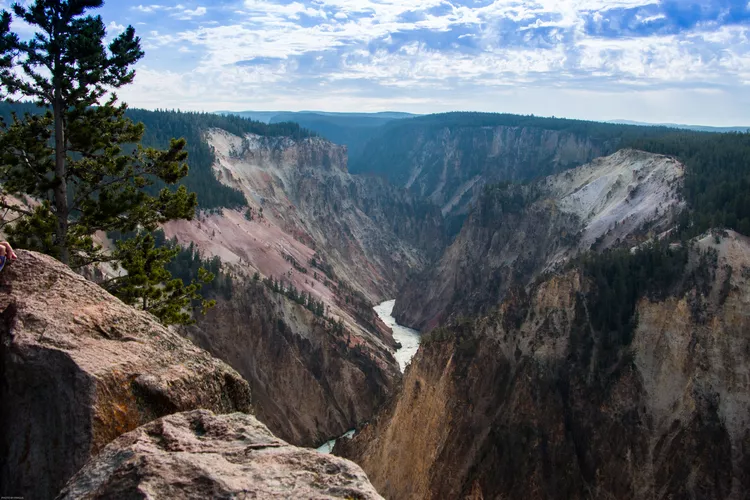Summary
Yellowstone National Park is the country’s oldest National Park, signed into law by Ulysses S. Grant in 1872, 40 years before the establishment of the National Park System. It continues to draw millions of visitors annually with its spectacular geothermal features, abundant wildlife, and breathtaking views. Consequently, this American gem is the most visited National Park by RVers in the United States.
Let’s explore the accommodations available for RVers in Yellowstone along with essential tips and tricks to maximize your visit to this stunning destination.
A Brief History of Yellowstone National Park
Yellowstone National Park is among the most visited sites globally. Situated atop a supervolcano, this National Park features some of the most remarkable geysers on the planet. Old Faithful, noted for its active eruptions, is a must-see. President Ulysses S. Grant officially designated Yellowstone as a National Park in 1872. The park is home to a wide variety of ecosystems and geothermal features studied worldwide. Historically settled by Native American tribes over 10,000 years ago, Yellowstone represents one of the largest areas of land overseen by the National Park Service.
For more detailed information, visit the National Park Service’s website to learn more about Yellowstone National Park.

Where to Stay at Yellowstone National Park
Yellowstone offers 12 campgrounds featuring over 2,000 individual sites. Each site has its unique amenities and limitations. Therefore, ensure that your RV or trailer adheres to the size restrictions of your chosen campsite. Below, we highlight five recommended campgrounds, providing insight into what Yellowstone camping entails and notable attractions nearby:
Bridge Bay Campground
Located 30 miles from the East Entrance to Yellowstone and near Yellowstone Lake, Bridge Bay Campground is an excellent choice for fishermen, thanks to its closeness to the Bridge Bay Marina. While this site does offer dumpsites, it does not include utility hookups.
Canyon Campground
Canyon Campground is centrally located in Yellowstone, less than a mile from the Grand Canyon of Yellowstone. This site allows access to various parts of the park while nestled within a serene forest backdrop. Canyon Campground is also conveniently located near amenities such as food and gas stations, although it lacks utility hookups. However, a dump station is available.
Grant Village Campground
Grant Village Campground is located along the southwest shoreline of Yellowstone Lake, just a few miles from the West Thumb Geyser Basin. It is close to several trailheads that weave through numerous geothermal attractions. Furthermore, Grant Village is situated less than a mile from RV dump stations and showers, but it, too, does not provide utility hookups.
Madison Campground
Madison Campground is conveniently located near the Madison River, where the Madison, Gibbon, and Firehole rivers converge, making it an ideal fishing destination. Only 14 miles east of the West Yellowstone entrance and 16 miles north of Old Faithful, Madison also provides access to the Upper, Midway, and Lower Geyser Basins. This campground does not have utility hookups, but dump stations are available.
Fishing Bridge RV Park
Fishing Bridge RV Park is unique in that it is the only Yellowstone-operated RV campsite that offers full utility hookups. Positioned near the mouth of the Yellowstone River, it’s a prime location for birdwatching. However, RVs and travel trailers here are limited to 40 feet in length.
It’s advisable to plan your stay and make reservations well in advance, ideally up to a year ahead, to secure a desirable RV parking spot in Yellowstone. This popular National Park awaits your visit!
What to Do Once You Arrive at Yellowstone National Park
Your journey to Yellowstone would be incomplete without witnessing Old Faithful. After experiencing this iconic geyser, you can delve into the wider attractions tailored to your interests. With nine visitor centers dispersed throughout the park, you can easily learn about its rich history and cultural significance. Educational tours are available; however, they may fill up quickly, so it’s best to plan your reservations beforehand. Activities such as horseback riding, hiking, fly fishing, kayaking, and rock climbing are all at your disposal. The park offers both front country and backcountry routes to explore its breathtaking landscapes.
Pro Tip: To fully enjoy your daily excursions, make sure to plan them in advance. Millions flock to the park each year, creating heavy foot traffic. By mapping out your activities, you can achieve everything you intended during your visit while others may miss out due to lack of preparation.
When to Go to Yellowstone National Park
Choosing the optimal time for your visit significantly enhances your Yellowstone experience. Most of the premier RV sites at Yellowstone do not open until late spring and early summer and start closing their gates around early September.
Peak season typically spans from mid-June to the end of July. If you prefer cooler weather with fewer crowds, it is ideal to visit at the beginning or end of the season. Conversely, if you seek excellent weather and don’t mind a busy park, aim for late spring to early summer. Planning your trip up to a year in advance can help guarantee RV parking at Yellowstone National Park for your upcoming road trip adventure.





